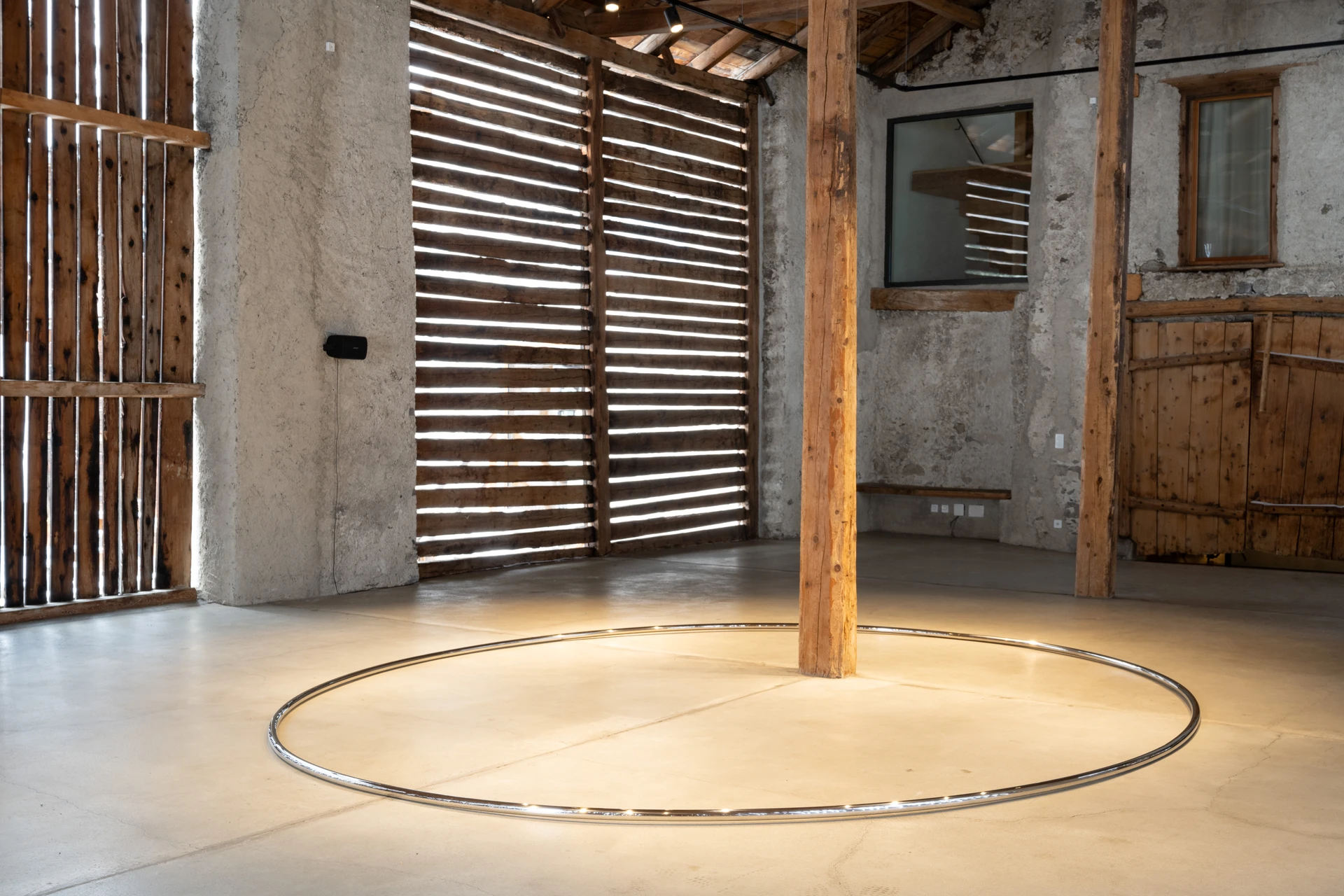"Paradise is a walled garden, defined in part by what is shut out" (theSTABLE, Engadin, CH), 2024.

works at the intersection of site-specific sculpture and performance, exploring our perception of space, movement, and recognition. As part of this exploration, he founded the artist-run program 99CANAL in New York City. — CONTACT
"Paradise is a walled garden, defined in part by what is shut out" (theSTABLE, Engadin, CH), 2024.

In The Coin, a recent novel by Yasmine Zaher, an unnamed narrator cultivates a garden
inside her cramped New York City apartment. An emigre, she feels disconnected from
her new land, so she buys bags of dirt and walks all over the city sourcing unusual
plants. The antic garden she cultivates conjures the lost garden of her Palestinian
grandmother; it is also a place of untrammeled growth, wildness, and ultimately,
freedom. “No, my apartment wasn’t dirty. Nature is clean. It’s civilization that’s dirty,”
she wryly observes.
Not dissimilarly, George Orwell, the hallowed prophet of totalitarianism, once espoused
the wonders of gardening as a bulwark against hopelessness—an investment in the
future. Orwell, who wrote about gardening in a 1944 essay called “A Good Word for the
Vicar of Bray,” loved to grow roses in particular.
And yet the origins of the garden tell a different story. The term “garden” hails from the
Anglo-French word gardin, or “enclosure.” In ancient Japan, gardens were erected for the
pleasure of emperors. In 17th century France, gardeners snipped and pruned and
shaped, making horticulture a high art. In English, the word “paradise” is derived from
Avestan, an ancient Iranian tongue in which the term evokes a “walled garden.” The
oldest Persian garden for which there are records belonged to Cyrus the Great and was
distinguished by its geometrical shape and cypress, pomegranate, and cherry trees.
All of which is to say, across history, the garden, while ostensibly idyllic and full of
world-changing metaphorical vim, suggests a rarefied, exclusive, closed space—a space
entangled with power, characterized by strenuous planning and control.
It is this double nature of the garden that animates a new work by the artist Baldassare
Ruspoli.
Improbably, Ruspoli has conjured a garden of his own in an abandoned stable perched
atop a mountain in the Swiss alps. While abstract, the garden remains vivid: a stainless
steel ring encloses a single beam in the stable, dividing the space into two. The ring, an
ellipse, doubles as a border. Not far away, in a corner, a human-sized plant looms, a 3d
bronze-cast facsimile of a hollyhock, a goofy-looking species whose flowers only bloom
only part of the year. Invasive by nature, the hollyhock stoops ever so slightly, as if
eavesdropping. Its positioning some distance from the ring creates a productive
confusion around notions of “inside” and “out”.
Mercurial music, meanwhile, permeates the space. These are subtle, irregular, even
jarring sounds made by manipulating the ring—by mouth, violin bow, and rubber mallet
among sundry other things—in collaboration with the artist Jacob Ott. But the sounds, it
should be said, have undergone a journey; recorded in the gallery, they’ve been played in
a faraway valley, recorded anew, and then played back in the gallery space. A parable for
art: while the sculpture doesn’t travel, its resonances can—its texture inflected by each
new encounter with the world.
Perhaps most crucially, the ring doubles as a mirror. Using sandpaper, Ruspoli has
polished its surface over and over again—a laborious process of removal which renders
the steel shiny and reflective. In this way, viewers can lean over and see both
themselves and the space within its bounds. Inside or outside, paradise or prison, the
ring implicates you—the viewer—in its bespoke spatial politics.
Text by Negar Azimi.